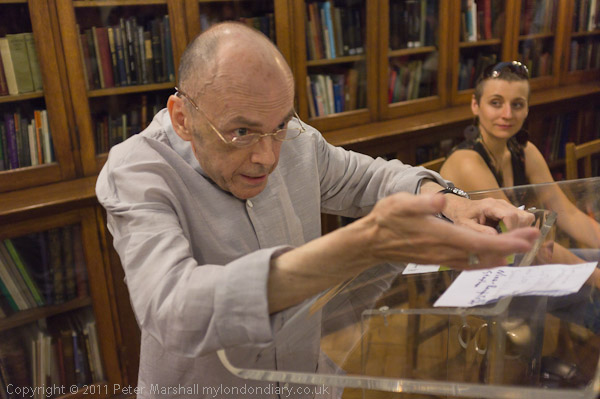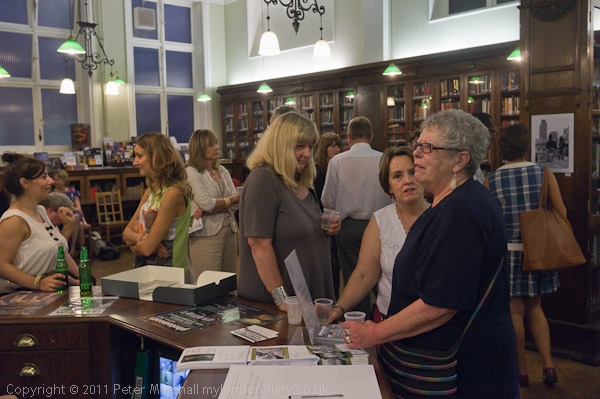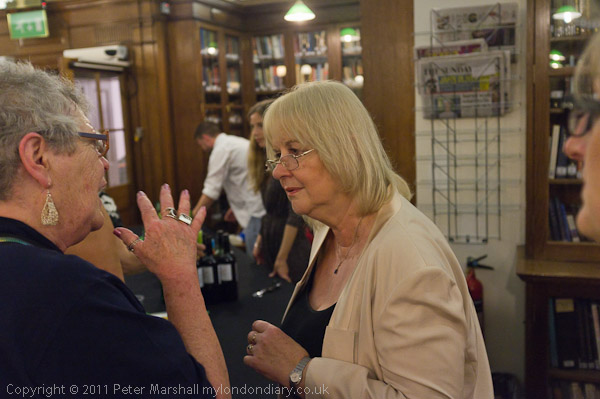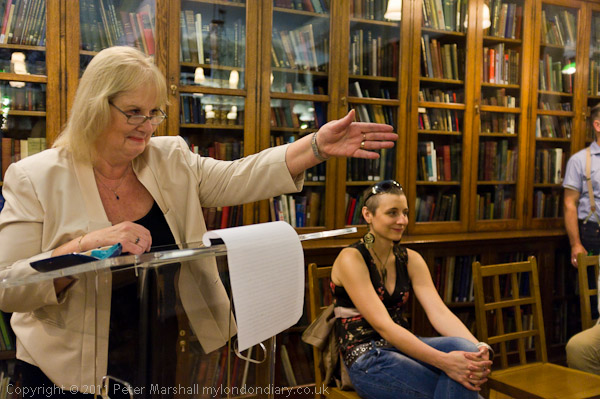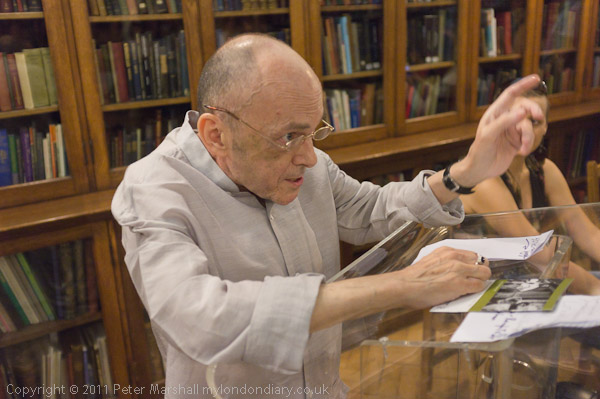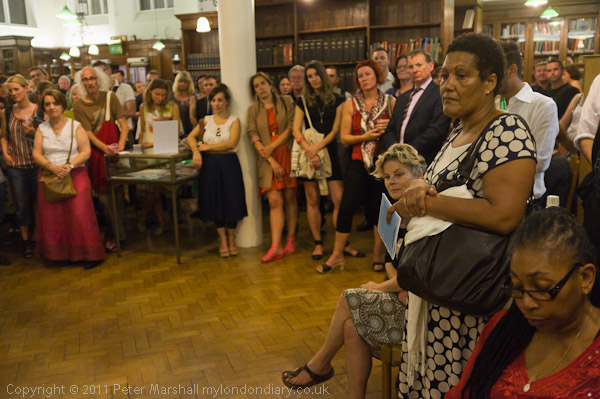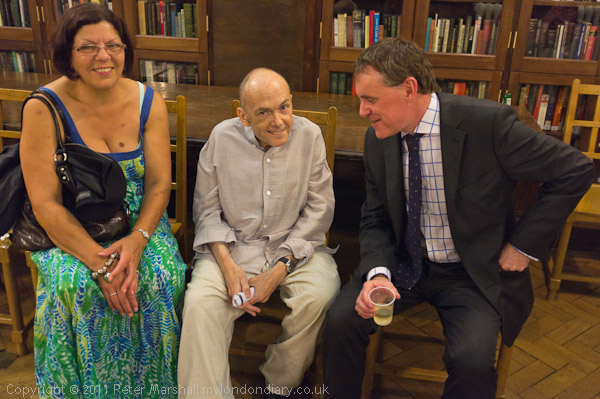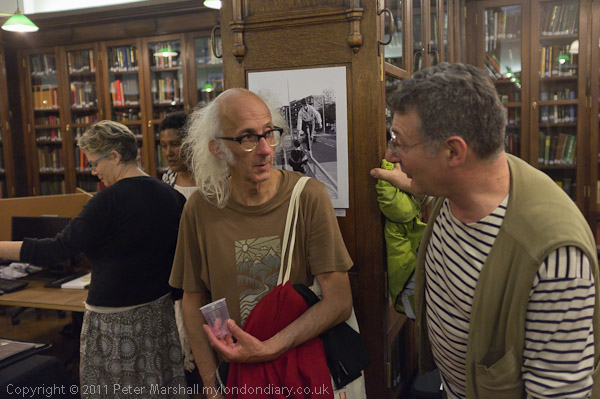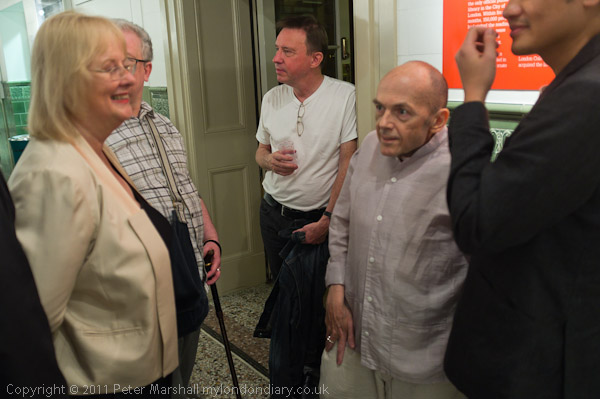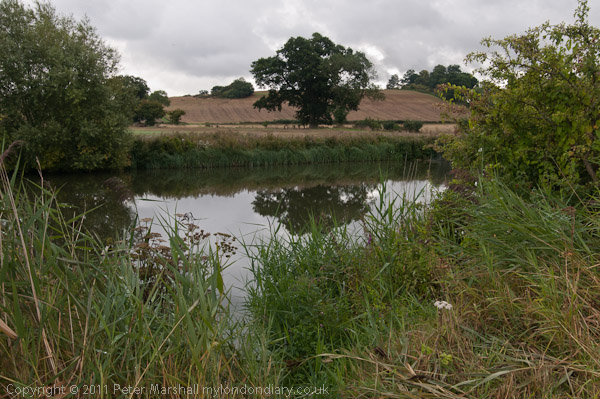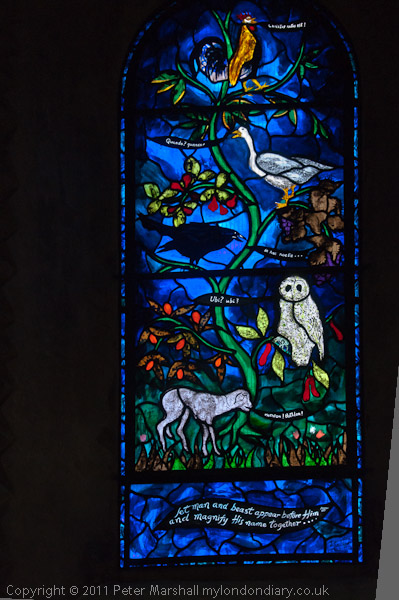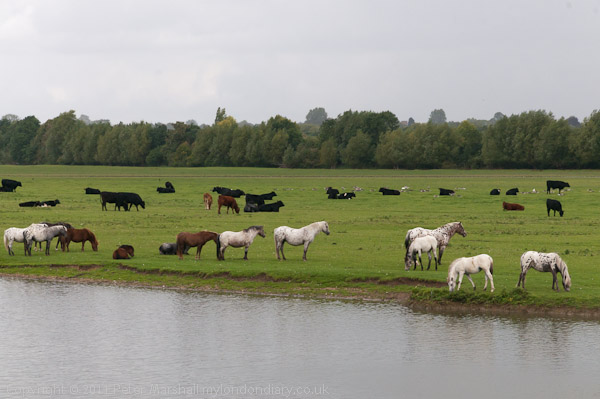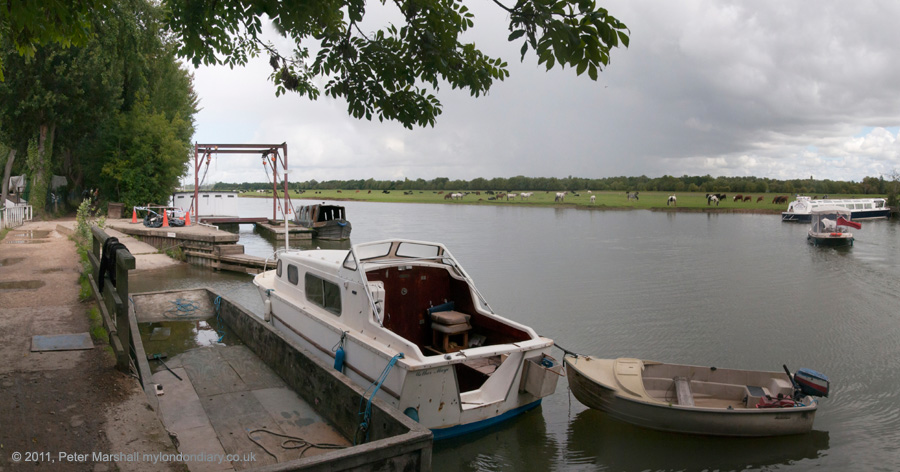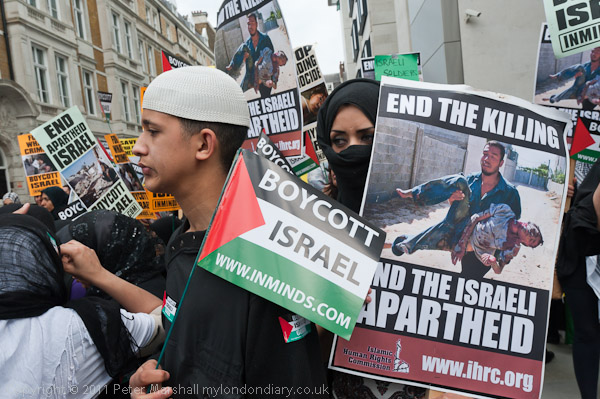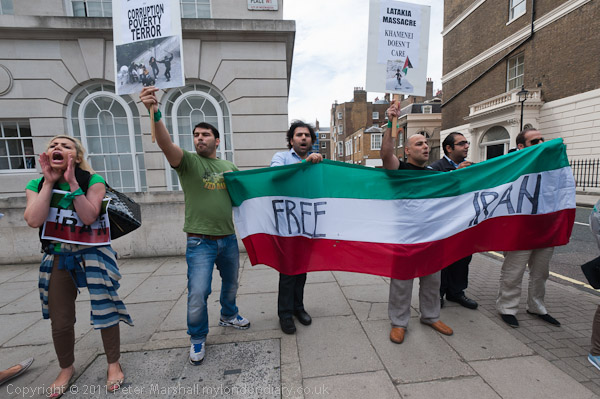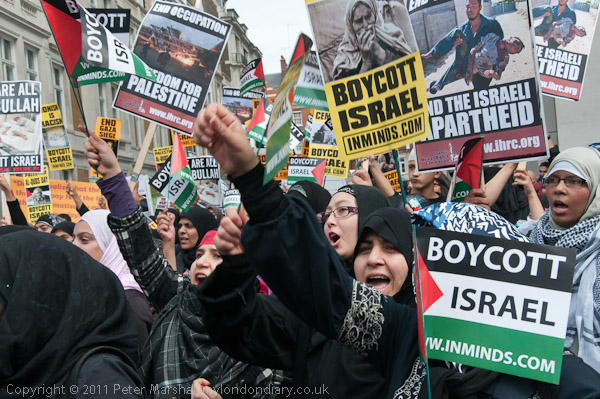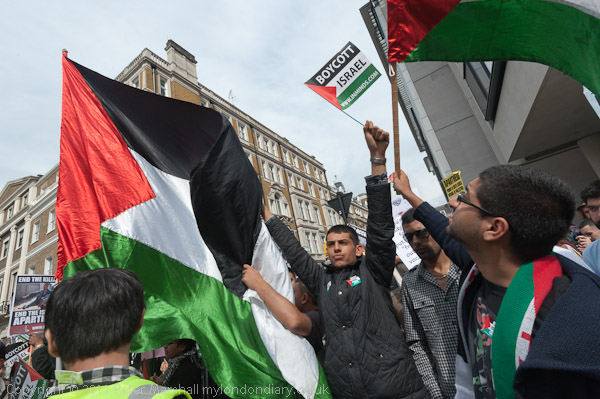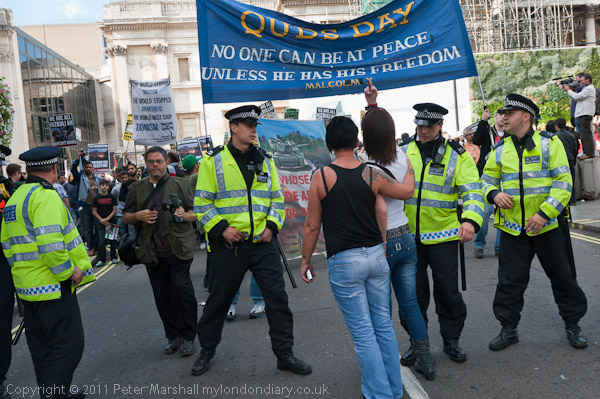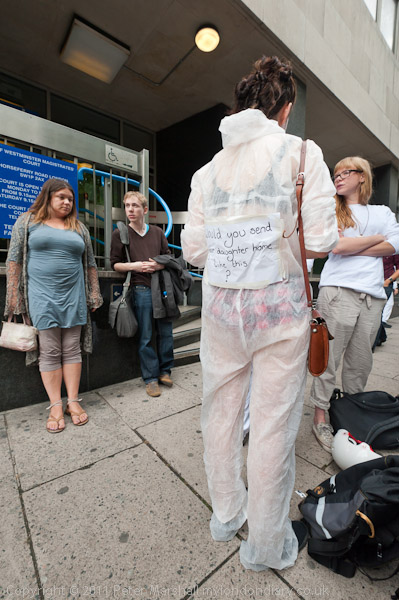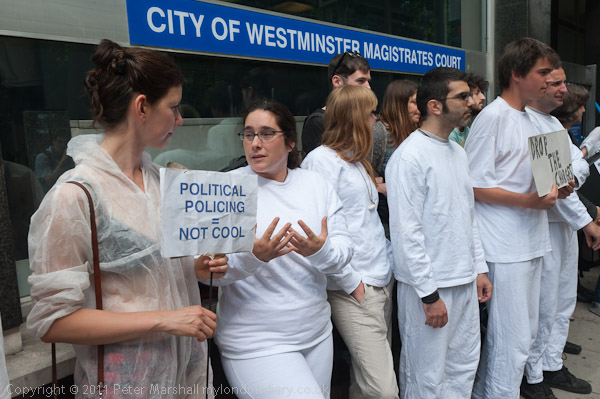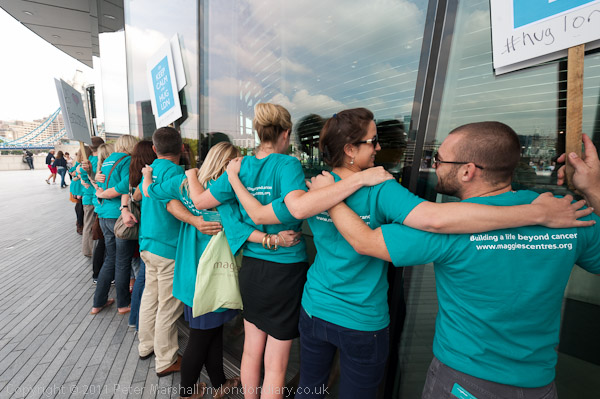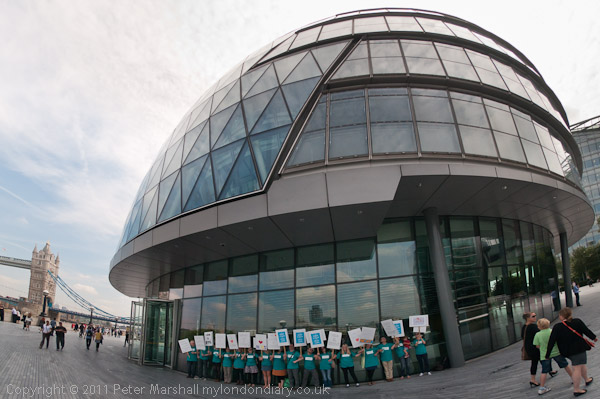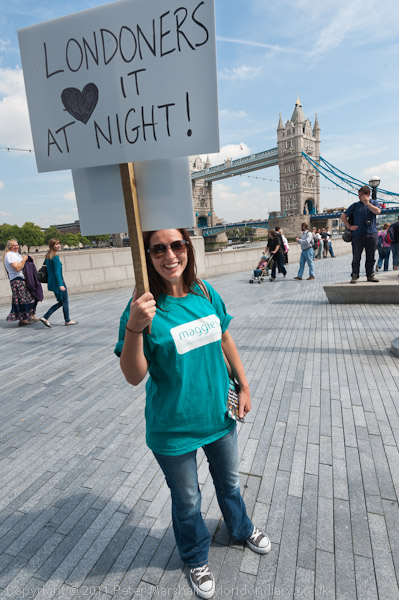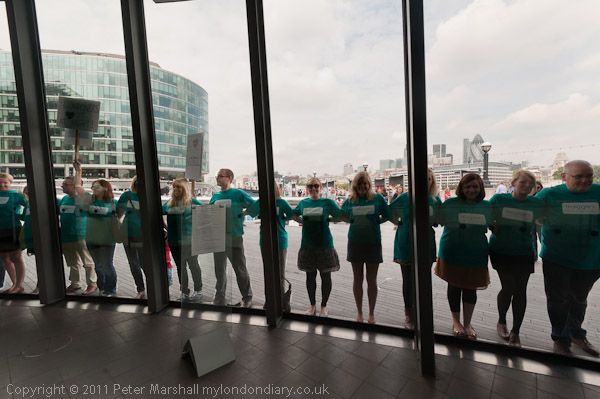Saturday afternoon I made another trip to the Northern Outfall Sewer (aka Greenway) on Stratford Marsh, a site I’ve been to many times over the years since my first visit around 1982. But this time I wasn’t just going to take photographs as I have done over the years, but to talk about my work, along with four other photographers, and to take part in a discussion with them and the twenty or so others present in one of the sessions of the ‘Salon de Refuse Olympique’ (I think seriously missing an acute accent on the third word of the title) which was described as “An Olympian marathon of salon debates for forthcoming book documenting and highlighting critical creative responses to the official London 2012 Olympic Games site and Cultural Olympiad.”
Our session, held in the View Tube, entitled ‘Imagining the Olympics‘ was led by Dr Ben Campkin, Director of UCL Urban Lab and assistant director of Architectural Research at the Bartlett School of Architecture and the other photographers on the panel were Chris Dorley-Brown, Alessandra Chila, David George and Giles Price. Gesche Wuerfel also down to take part was out of the country but had sent some thoughts.
I don’t know how it will emerge in the forthcoming book, but for the event each of us was asked to send 3 photographs and to use these to talk about our work. So here are the three pictures I sent and below them the text that I wrote and used as a guide to my presentation.

London Olympic site 1990

London Olympic site 2005

London Olympic site 2010
Before The Olympics The Lea Valley 1981-2010 and Beyond?
Two of these pictures are in my book Before the Olympics the Lea Valley 1981-2010 and the third taken shortly after I put that book together. A dozen of my pictures of the Olympic site in the 1980s including the first of these three are now in a show that opened this morning at the Shoreditch Gallery in Hoxton Market, part of the East London Photomonth.
I made that 1990, the next 2005 and the last 2010. All made more or less where we are now, a place where Ive taken quite a few photographs over the years. Much of the work from the area is on my Lea Valley web site, which gets around 250 views a day, a rather small fraction of the 3.25 million a year for all of my work, but the active time on the site for the average visitor of almost a minute is high in web terms. I showed over 250 pictures from the site in a presentation at the 2010 London Documentary Film Festival after which I was asked Do you have a book and thought to myself Why not?, and a couple of weeks later I did – and Blurb made it an editors pick and got me to talk about it at their week of presentations in London last November.
I began photographing London in the early 1970s, but only began work seriously in the 80s, having produced and exhibited a major project on Hull, where Id found a way to approach the city. Id also worked in Paris, where ten years earlier Id come across and been inspired by the work of Eugene Atget. Other influences included topographic works such as the encyclopaedic Face of London by Harold Clunn and of course Pevsners The Buildings of England series, though this was in some ways a perverse stimulus in that I was often more excited by what he left out than what he put in.
Back then, few people were in any real sense attempting to photograph London as a city, and the scale was daunting. There were no digital cameras, no GPS, no geo-tagging, no personal computers, no Internet. I started with the A-Z of London, which fortunately after a few years changed from its own system to use the National Grid. At the base of my project was the idea of building up a corpus of work that would include what I felt to be significant buildings and scenes to represent every kilometre square of Greater London (though of course some were much more productive than others.) It remains an unfinished project, partly because of the scale (there are probably around 2000 such squares in my slightly elastic definition of London) but largely because it has been overtaken by the Internet and the explosion of photography in the digital era.
But this work, some of which was bought for the National Building Record and some put on my first major web site on my own domain in 1996 it was called (in a nod to Pevsner) buildingsoflondon.co.uk. I saw the work as a resource and a jumping-off point for other projects, some related to geography and transport including projects on the Northern Outfall sewer, below us, the Lea Navigation and other rivers, and, not far away, the Greenwich Meridian, but others which were more a cultural exploration, such as Ideal Café, Cool Blondes and Paradise. Another major theme was the de-industrialisation of London, reflected in part in my Londons Industrial Heritage site. The first portfolio I put together on the Lea was part of an unsuccessful application for Arts Council support around 1983, but many photographers who saw it were very encouraging, including one now very influential in the photography world who advised me to give up the day job teaching and go full time.
More recently Ive returned to photographing the people of London, on the streets, in festivals and particularly in protests, and have become better known for a site called My London Diary. This work brought me back to the Olympic site, both to cover the protests against the Olympic bid and also the unsuccessful efforts by the Manor Gardens allotment holders to be a part of what might have been a truly green Olympics.
Of course these three are not the only pictures that I took over the years from more or less the same spot – and had I had the time I could have matched them more closely from my files. On the way to the discussion I went and made several more panoramas, including one from the same viewpoint. And on Sunday I was back on Fish Island and Hackney Wick taking a few more images of the Olympic site, some of which I’ll share in a later post – and of course in My London Diary.
